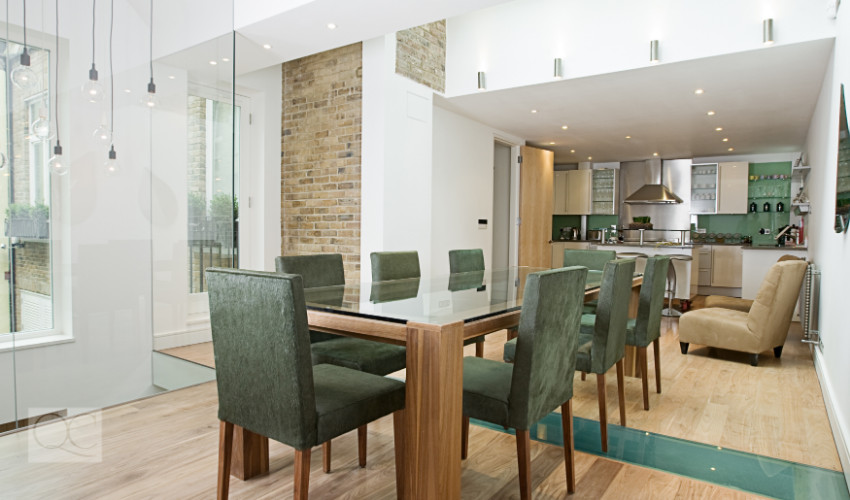Tammy Hart, I.D.D.P, CAPS is a graduate and tutor of QC Design School as well as a Certified Aging in Place Specialist from the National Association of Home Builders. She is the owner and award-winning designer for Designer Chick Co., and she’s the previous director of the National Board for DDA (formerly CDECA). She is a professional speaker and has spoken at venues like IIDEXCanada and the Small Business Forum. She’s been featured in East in the City Magazine, has had a guest spot on Daytime Durham, Rogers TV and has won the HOUZZ Service Award 2017. She works to empower young women to become successful future leaders and supports ocean clean-up efforts.
Congratulations! You’ve landed your first interior decorating job after graduating from QC Design School’s Interior Decorating course. But now, you fear the mistakes you might make on-the-job. No worries, we all make mistakes! But learning how to become an interior decorator means also avoiding rookie mistakes and fixing them before the job derails!
Check out this list of common mistakes made by even the most experienced interior decorators!

1. Forgetting to Get a Client’s Contact Info
Sigh, the number of times I’ve done this because I was so excited to meet a paying client for a consultation… I sit back and laugh (gently) at myself.
Obviously, by the time I meet them face-to-face, I’ve already communicated with them some details about the job. But I wouldn’t ask them for an exhaustive list of their contact information before officially getting hired.
So I would arrive at the house, have a great chat with them, and believe the meeting would follow a formal process, only to be greeted with, “We want this, and need that, and this is a wish, and the husband wants that, and I want this.” There goes my process!
In all the excitement, I would forget to get their primary contact information (email and phone number)!
What I do to prevent this mistake:
My interior decorating clients are now vetted through an introductory phone conversation where I ask them a list of questions prior to visiting their home. Now, I get all their contact details, and their preferred contact method, prior to meeting them.
2. Forgetting to Bring Important Trade Tools
Even after earning your decorating certification, it’s easy to not fully realize the tools you need for interior decorating jobs. Of course, the tools you use will vary based on the services you offer. But, at the very least, don’t forget the following tools you need to do your job properly:
- Your design portfolio
- A measuring device, whether it be a laser measure or a tape measure
- A color fan deck
- A sketchbook and a pencil
- A camera/phone with a high-quality camera
What I do to prevent this mistake:
My fix for this was to put together an organized bag with everything I need take to my jobs.

3. Forgetting to Measure Twice
I remember one job where I completed my measurements, but I was climbing over furniture, walking through spider webs, and sweating through my clothes (our job is truly glorious!). After I got the measurements, I left. But I only measured once.
When I got back to my studio, I looked at my measurements and thought, “This isn’t adding up… That doesn’t make sense… Crap!” I didn’t measure twice to double-check my first measurements. I had to call the homeowner to ask if I could go back to re-measure everything—embarrassing!
What I do to prevent this mistake:
Always measure twice on-site prior to leaving.
Here’s a pro tip: clients like to chat and hang out with you while you’re measuring. After chatting for a few minutes, I now say to my clients, “I’m enjoying our conversation but I don’t want to muck up your measurements. Can we continue chatting after I do your measurements?”
4. Forgetting the Floor and Ceiling
As I work with my students, I see many fabulous projects that forget about the floor and the ceiling. Unfortunately, they don’t consider what’s right in front of their eyes.
I’ve seen students forget to add area rugs or new flooring. I’ve seen them forget to consider the finish and condition of the ceiling. I’ve also seen them forget about bulkheads. What if there are bulkheads? You can’t forget about them as they reduce or change your wall height and affect the visual perspective of the space.
What I do to prevent this mistake:
Create a thorough process for viewing an entire room. For example, when I walk into a home, my eye automatically starts at the floor. My eyes then travel up the baseboard to the walls, the window(s), the trim, and all the way up to the crown molding and ceiling.
Creating this habit/process will prevent you from forgetting anything in the space. While you’re doing this, step into the corners of the room to take good reference photos for later!

5. Forgetting Your Trade Discount
Oftentimes, new professionals start their interior decorating business without knowing that many vendors and suppliers offer trade discounts. These are discounts that are passed along to you by suppliers as you become a repeat client. The discount allows you to then mark up your item at a percentage between your cost and retail price before selling to your client.
What I do to prevent this mistake:
I always ask if a company offers a trade discount. It doesn’t hurt, and the worse a company can say is no. Even many big-box companies offer For Trade Only pricing.
6. Forgetting Your Color Palette
New interior decorators may forget to include the color palette when presenting their design concepts to the client. This means forgetting to include color swatches that depict the entire room’s color scheme.
What I do to prevent this mistake:
My students know that I’m a stickler for including the color palette in your presentation. The client wants to see the colors you’re visualizing their space to include!
Pull brand-specific colors and include them in your visual presentations, whether you create an online pinboard or do it the old fashioned way on foam board. But show your client where your head is at!
7. Forgetting To Sign a Contract
Before starting any interior decorating job, you must have them sign a contract. The contract tells your client the services you will provide them, your stipulations, and your costs for the project. I’ve seen designers and decorators either forget to use a contract or forget to have their clients sign one.

What I do to prevent this mistake:
Have a contract! Have it signed as soon as your quote is accepted.
I usually create a quote, present it in-person to the client, and have my client sign the project contract right there before taking the deposit. This way, work can begin immediately. Without a contract and a deposit, no work begins.
8. Forgetting that it’s Your Client’s Home – Not Yours
One time, an internet service technician was working in my home. We got to chatting and it turns out he was looking for a designer.
As he was in my home, he saw my personal decorating tastes and style. So he asked me, “What if I don’t have the same taste and style as you do?” My answer was a simple one, “It’s your home. I work with you and your wife to accommodate both of your tastes and style preferences. You’ll see hints of my decorating style but not my preferences. At the end of the day, it’s your home. It’s about you coming home and enjoying your space.”
Too often, interior decorators will style homes to suit their style preferences and not their clients.
What I do to prevent this mistake:
It boils down to respecting your client and their sense of style and space.

We are all human, and there will be times when we forget to do something. But by having organized procedures, you’re less likely to forget important tasks when working with your clients. Plan your processes and stick to them!

Please help.
I need someone who can come into my home and work with what I have .
I think the pieces might work in another room, the carpets are inter changeable and I don’t know where to put them and most things are interchangeable.
What is the title of someone who stages a home for someone who lives there and is not planning to move?
Please help.
I’m a 71 year old not techie female who thought she knew what she was doing. I will never be able to find this link again…please email me.
Hi Stefanie,
Our sincere apologies for the delayed reply! We thank you kindly for taking the time to read this article and comment on it. 🙂 Regarding your inquiry: there are plenty of home stagers who help clients rearrange their home, even if they’re not intending to sell. Our recommendation would be to do a search (in Google, for example) for local home stagers in your area, and then research into the different options. You’ll be able to see the types of services they offer by browsing through their different websites. At the very least, you should be able to gather a few numbers of home stagers you can call, to discuss your needs with them over the phone and see if they can assist you, what their rates are, etc.
We wish you all the best in your search, and hope you’re able to find an industry professional who can help you with your home! 🙂
All the best,
Sarah
The QC Team